People who struggle to stay on top of and ahead of their debts know the stress that a growing mound of debt can put on them. The inability to repay debts can leave them facing calls and letters from debt collectors and begin to make them fear losing assets or more. When other debt relief options have not worked, it may be time to consider filing for bankruptcy.
Chapter 7 and Chapter 13 bankruptcy plans both offer consumers relief from excessive debt, but they do so in very different ways. As explained by Credit.com, Chapter 7 plans are the most prevalent. These plans offer people a way to eliminate debt in a very short period of time. They can, however, expose consumers to the potential for losing assets, such as homes.
According to Credit Karma, a Chapter 13 bankruptcy may give people the chance to break free from debt while retaining their homes and other assets. Instead of an immediate discharge of debt, people in a Chapter 13 plan make monthly payments to a trustee. The trustee, in turn, pays creditors per an agreed plan. This goes on for anywhere from 36 months to 60 months. When the plan is complete, any remaining debts are then discharged.
Consumers with an income level sufficient to make the monthly payments and who have homes or other assets they want to keep may well benefit from a Chapter 13 bankruptcy versus a Chapter 7 bankruptcy. It should be remembered, however, that there are some forms of debt that are not able to be included in any type of bankruptcy plan.
